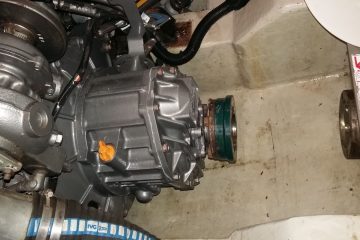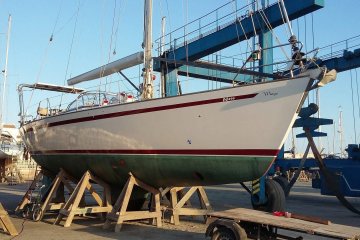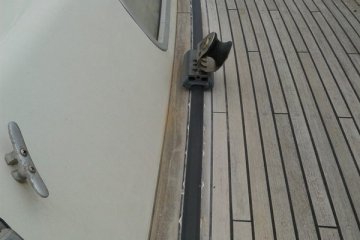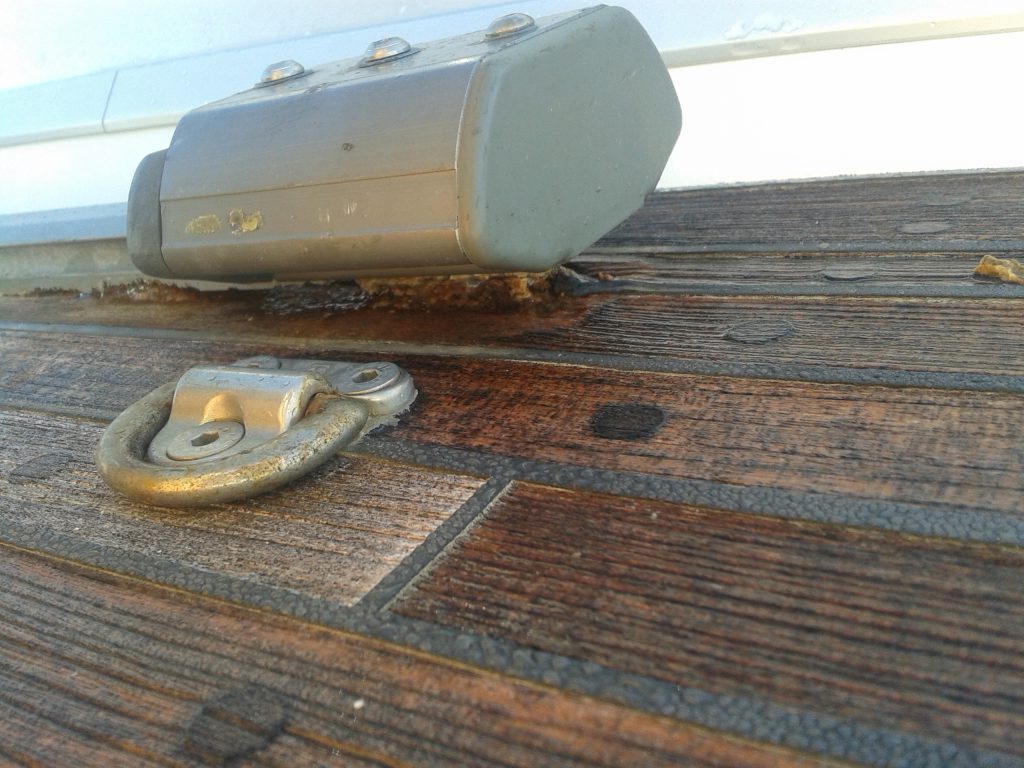
I was washing the deck the other day when I noticed this…
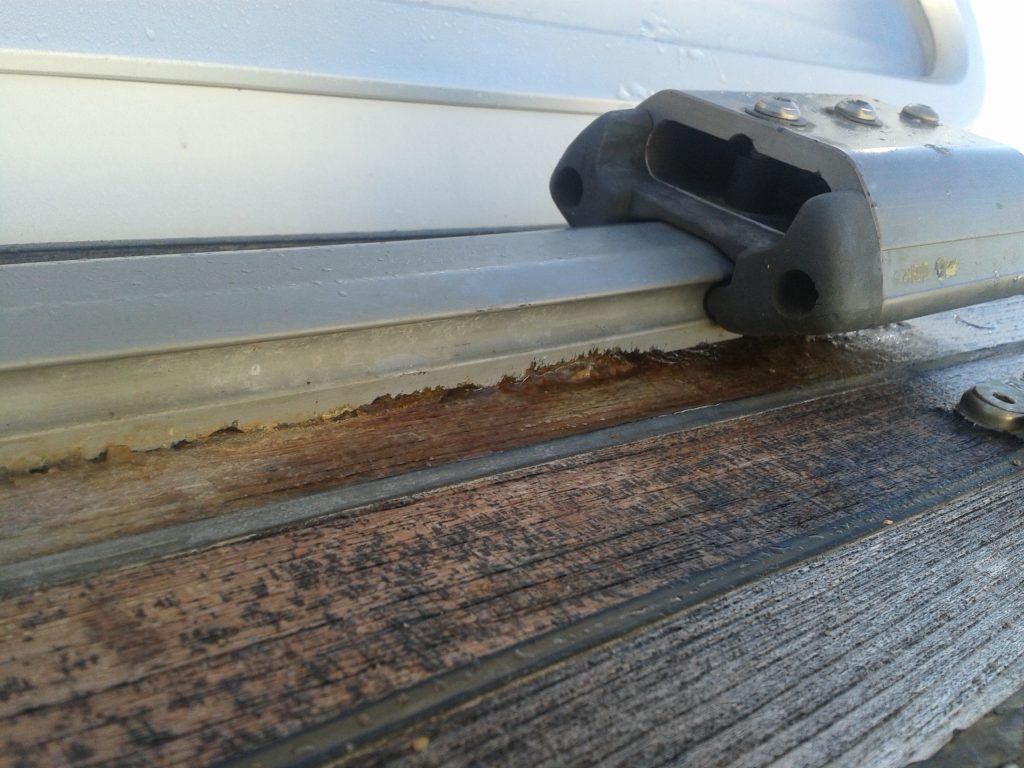
…and this..
What is going on?
Further examination of the entire track on both sides of the boat revealed a complete horror story. But what was the cause?
Simple – electrolytic corrosion – the bane of many boats and owners. Dissimilar metals (in this case it was aluminium and stainless steel) when physically in contact with each other and exposed to an electrolyte (seawater) react and rapidly corrode away.
Eventually this corrosion eats through one of them and you get to see the results! I’m not going into details of why this happens here, there are plenty of websites describing this effect.
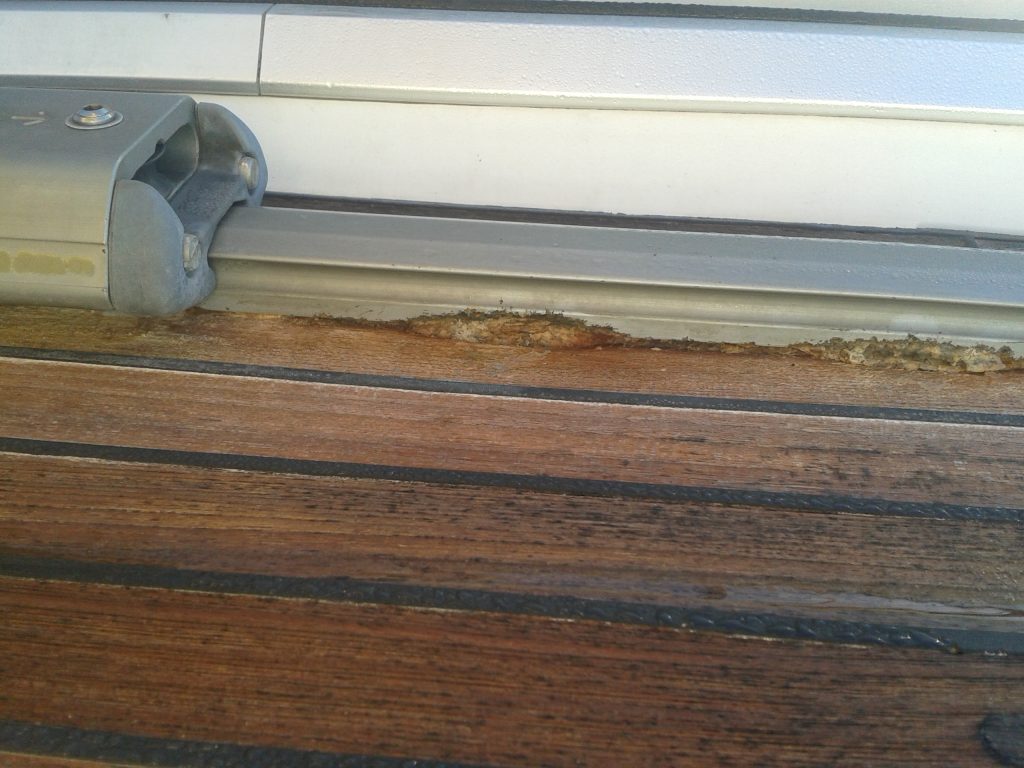
Oh no….. 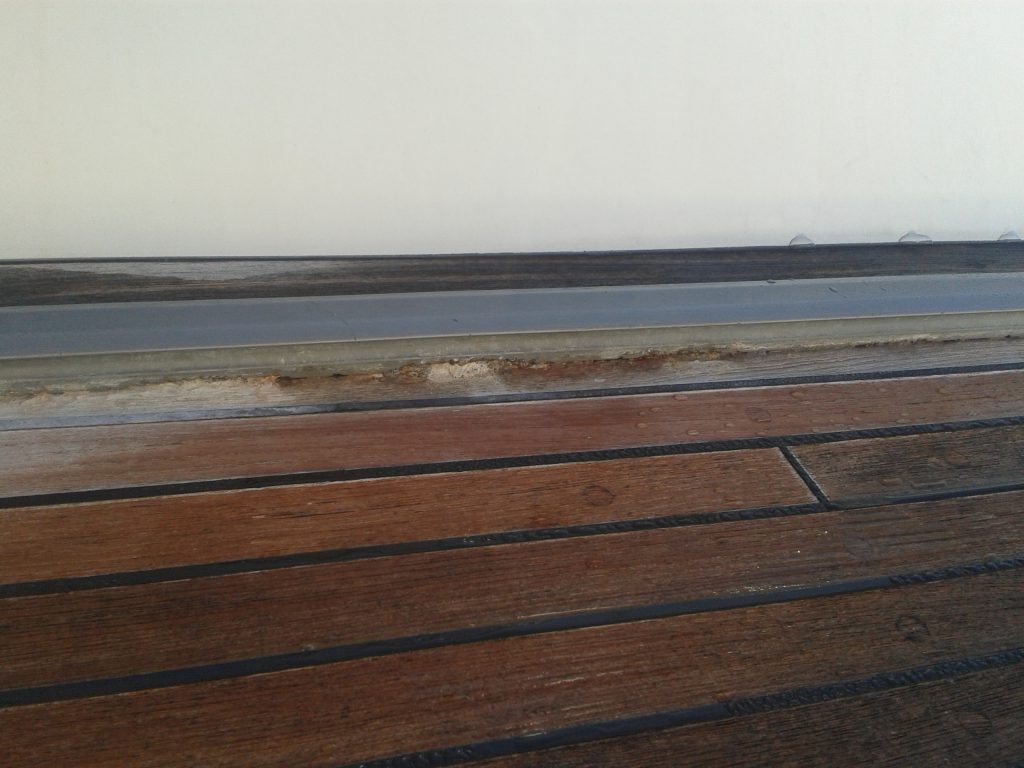
….it’s everywhere 🙁
So how to fix this?
Simple! Remove the damaged track and replace with a new one – right?
Well yes, but the track is secured with a myriad of bolts, 37 per track, per side (according to my helper). All the bolts are hidden behind internal joinery, head linings and cupboards.
Removing the head linings revealed some of the bolts:
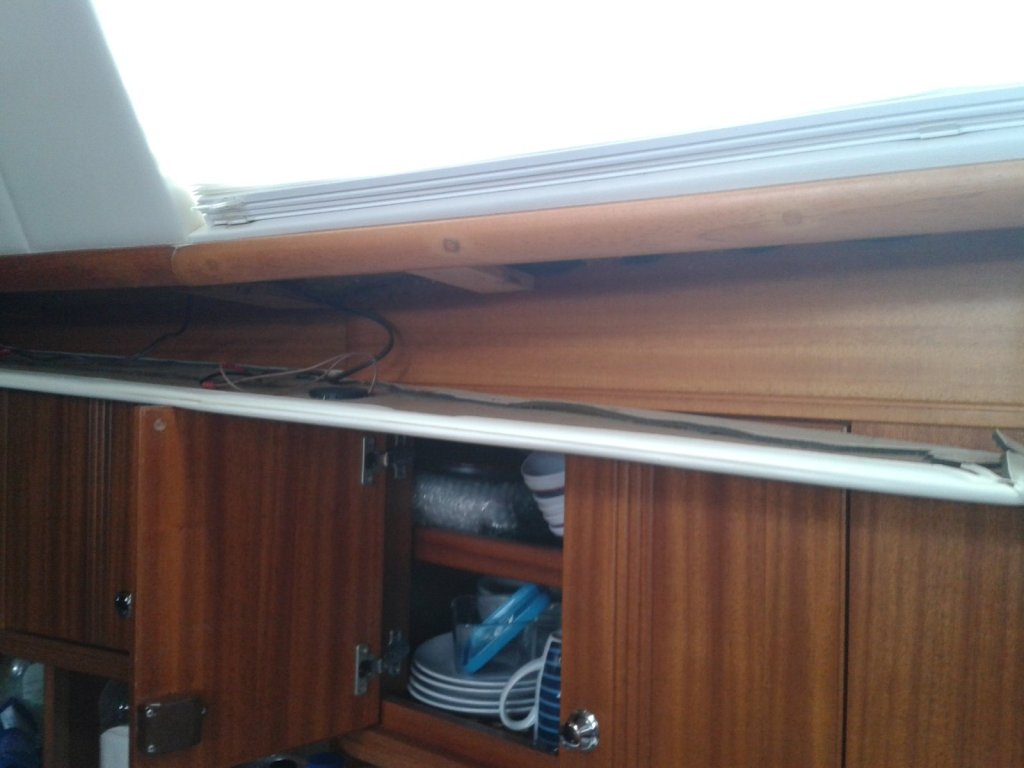
Remove the headlinings… 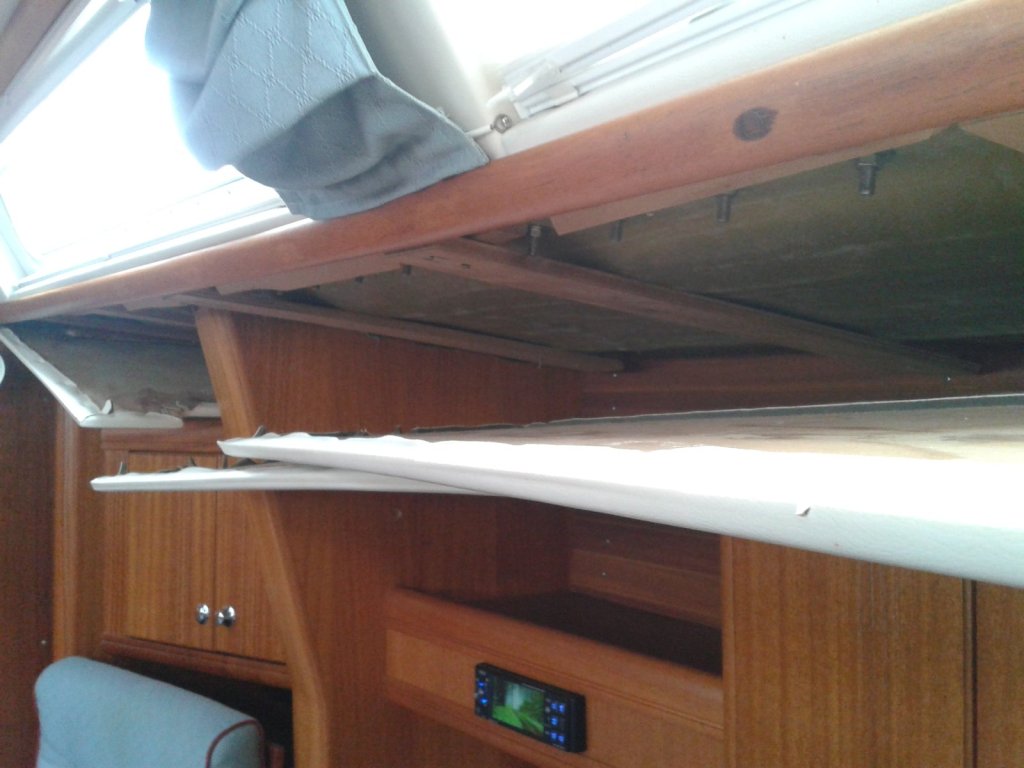
…to reveal the bolts. 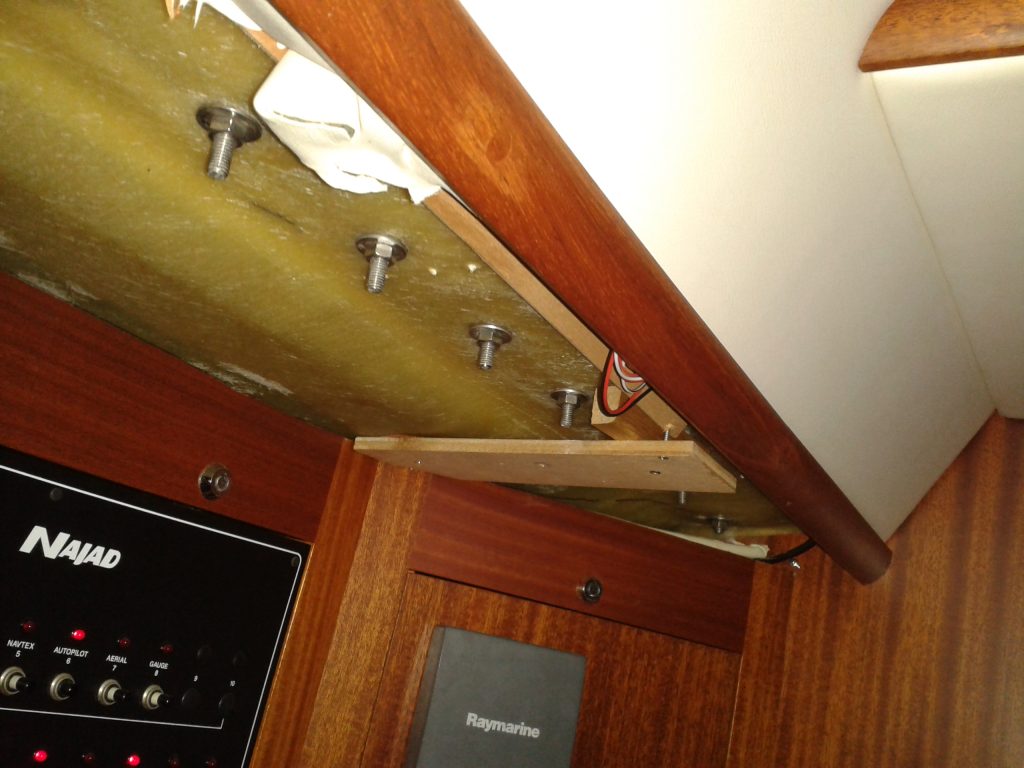
There we are!
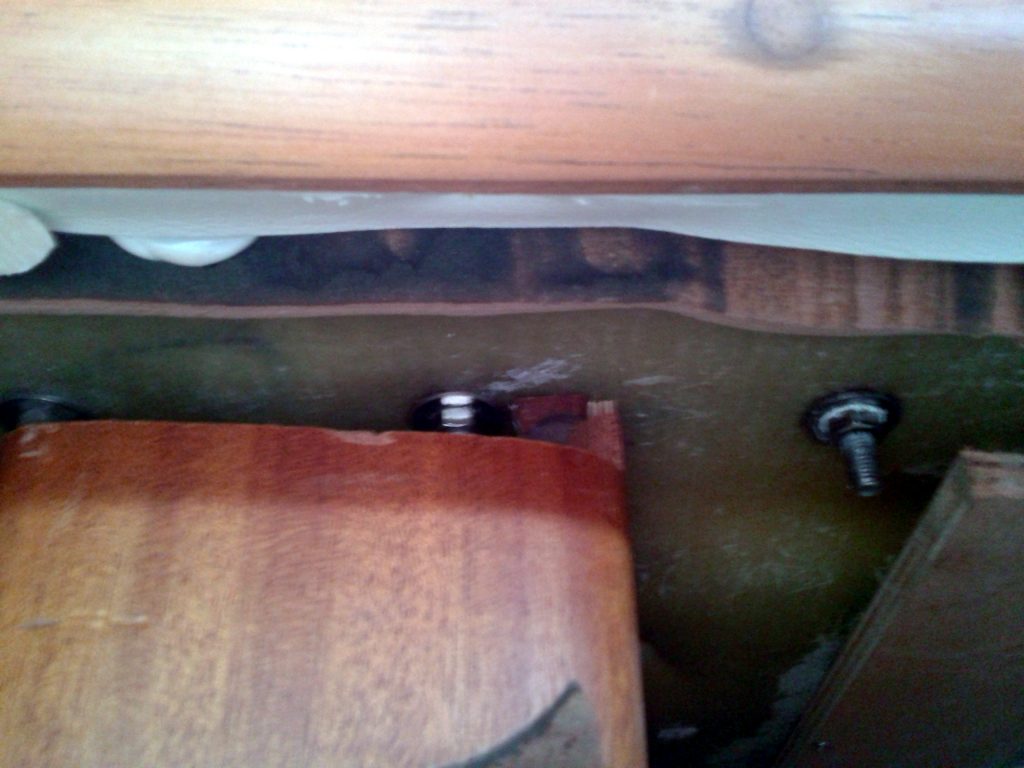
Others were hidden behind joinery…which had to be cut away.
Nice one – thanks Najad…
Even after we thought we’d found all the bolts something didn’t add up. There were 37 bolts on one side, but only 34 on the other.
Careful measuring, comparing and some deft curse words revealed that the only place the “missing” bolts could be was in the engine bay – great 🙁
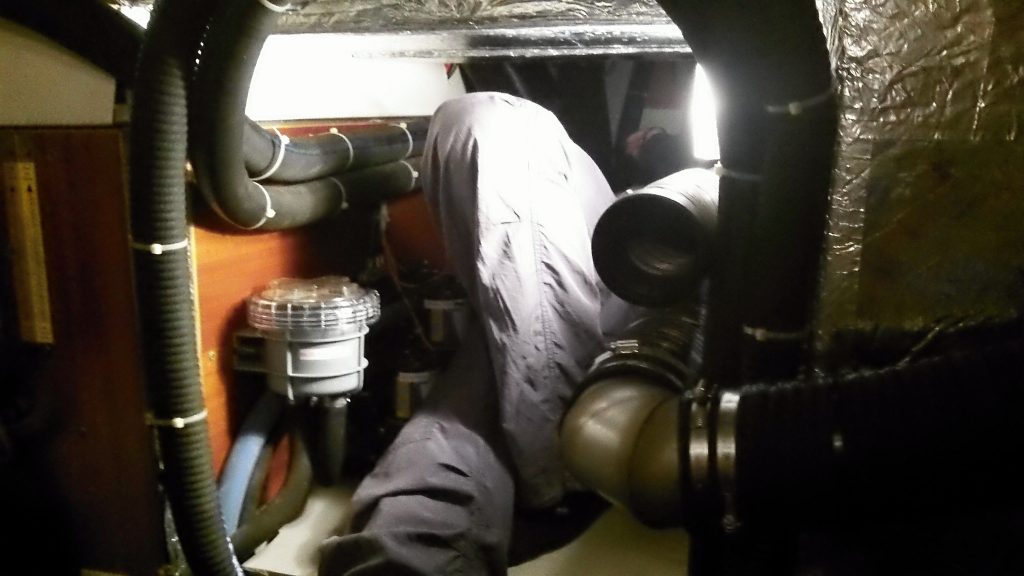
I love going in there – at least there’s enough room – just!
The bolts were there, hidden behind pipework and the like.
Removing all the nuts and washers didn’t take so long and yes, we carefully put them all in plastic tubs so as not to lose any.
Then it was time to remove the track. I used a “Fein” clone (look it up) with a flat blade between the track and the deck in an attempt to break any bond between the two. In the end I’m not sure it actually helped so much but I’d bought the tool just for this kind of job and I was determined to use it!
Actually lifting the track off the deck required the main halyard (runs to the top of the mast), a powerful winch and a set of “Molegrips” (look those up too…).
Oh, and a helper!
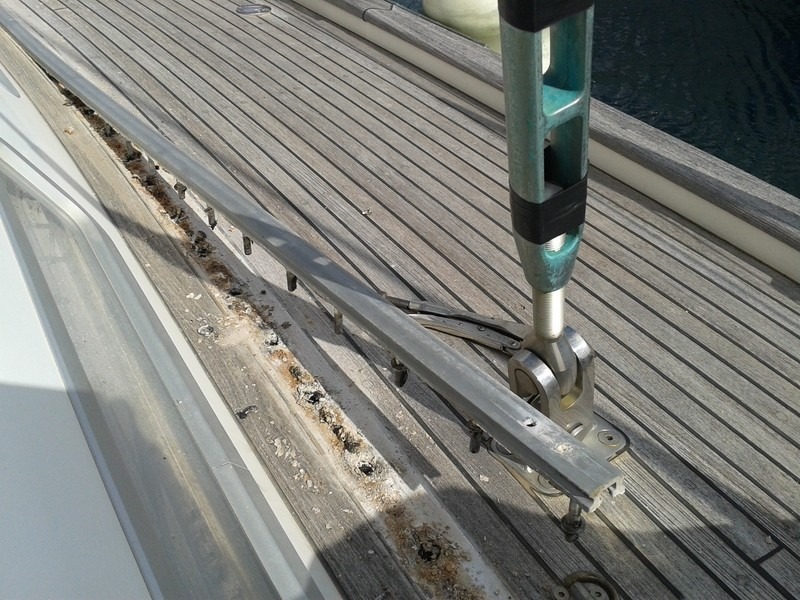
It’s a start… 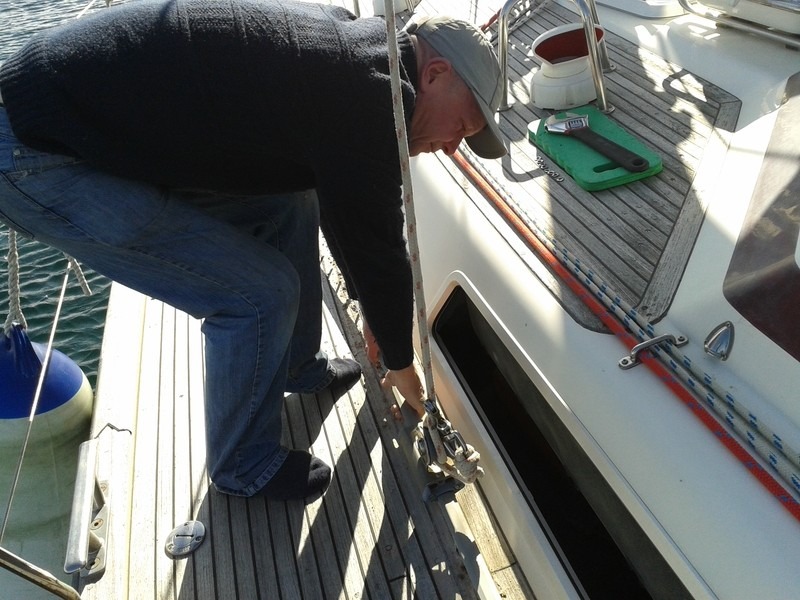
…using the halyard (and helper) to pull… 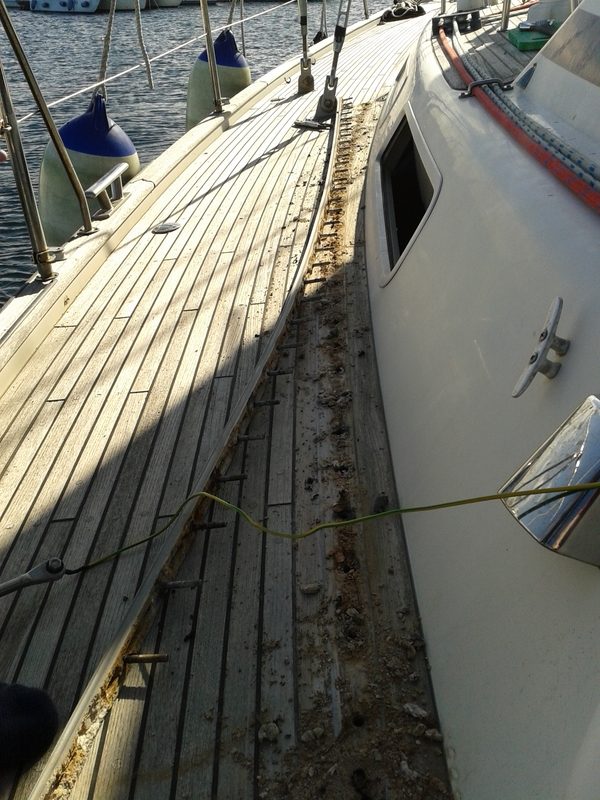
..and it’s off!
In the end it wasn’t so hard, but the damage revealed once the track was off was a little disheartening
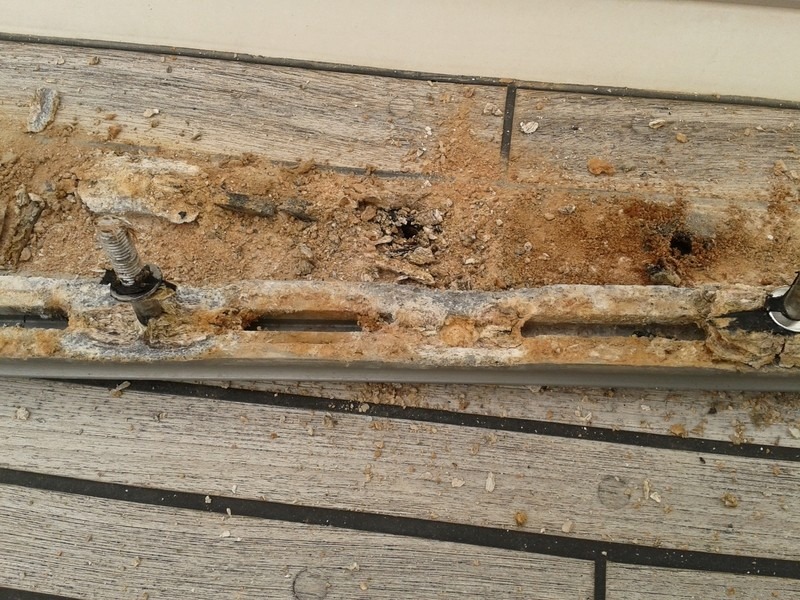
The cause of the corrosion became immediately obvious. Najad had placed stainless steel washers directly against the aluminium track with no insulating materials in between.
This contact between the two metals with the addition of some seawater (of which there is always plenty) created the perfect conditions for electrolytic corrosion. Strangely there seemed to be no corrosion the between the head of the bolt and the track – only between the washer and the track.
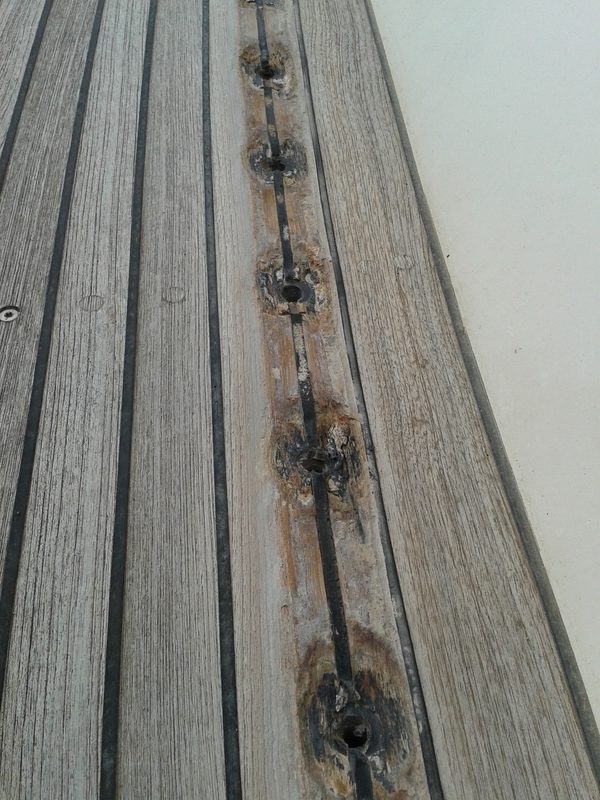
Unfortunately the corrosion had eaten into the teak and made quite deep depressions around each hole.
Hmm….that picture doesn’t show it so well, but the depressions were at least as deep as a 2 Euro coin.

